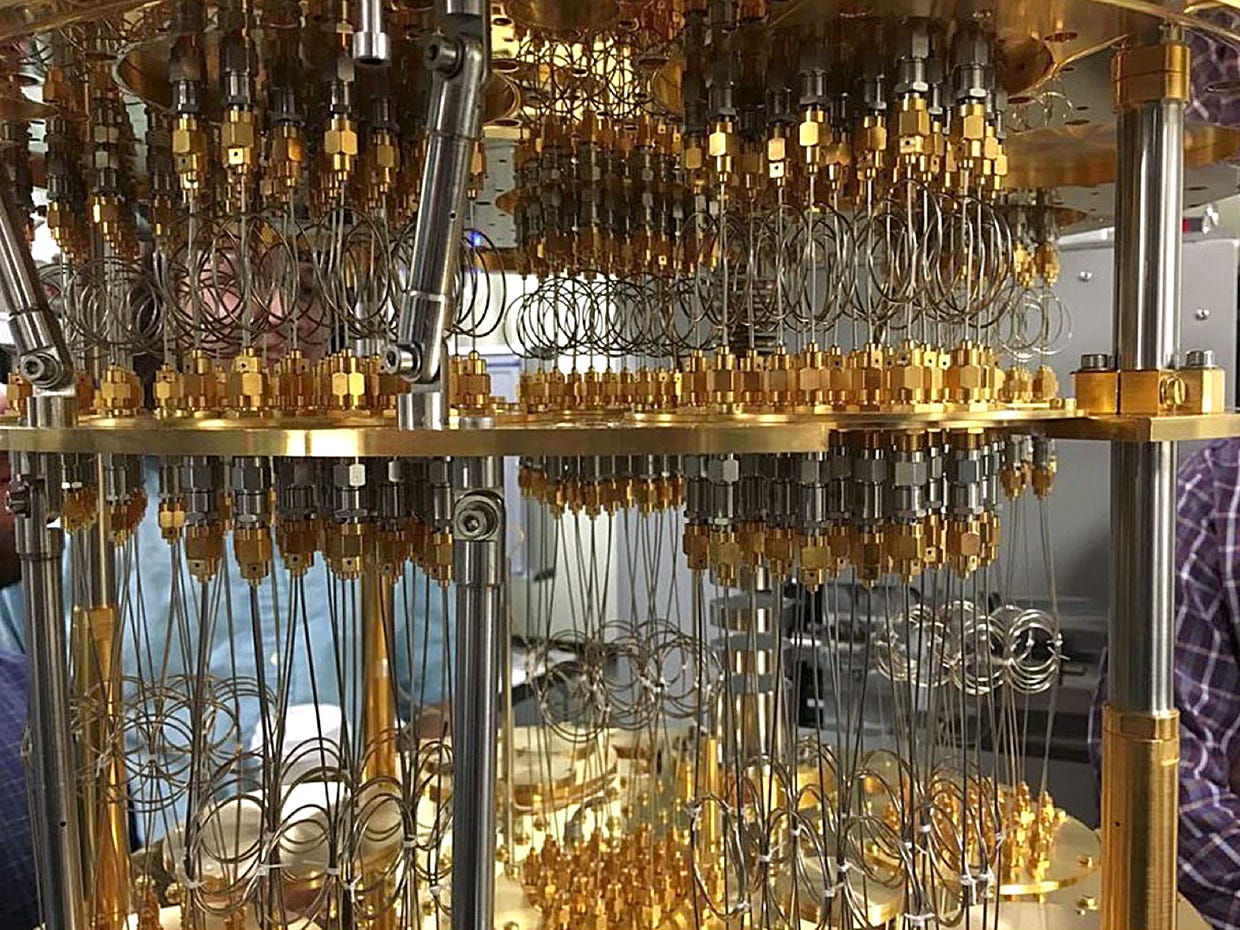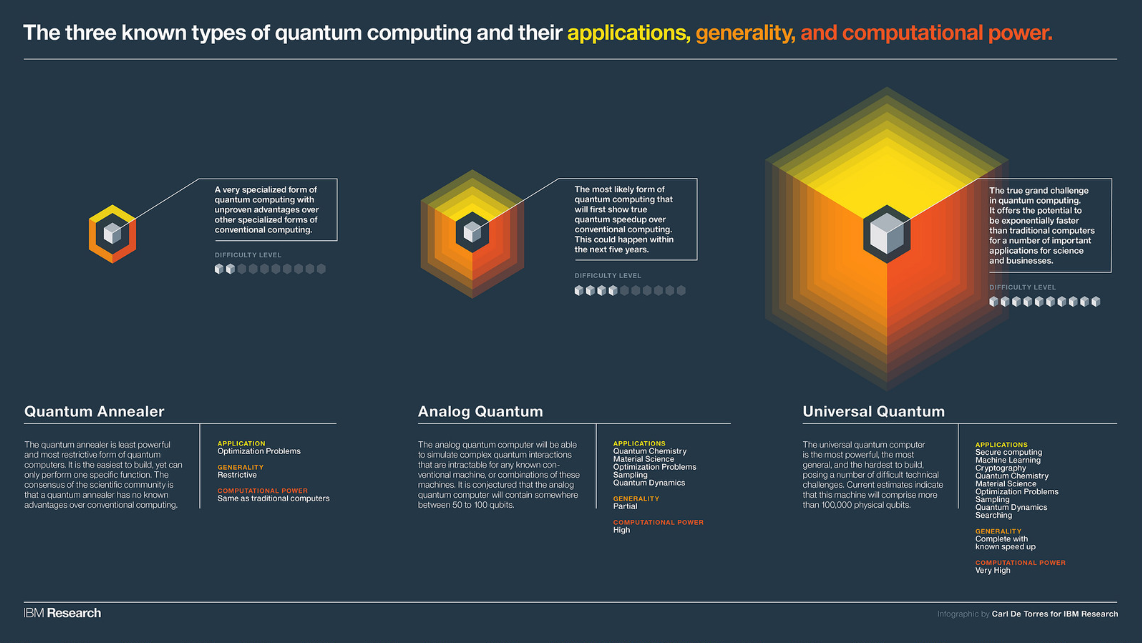 All we as humans had as tools for hundreds of thousands of years were sticks, stones, and our brains… and eventually fire. Arguably the greatest tool we’ve ever invented, though, is the computer. In the tiny span of time extending from the mid-20th century to now, we’ve entered a realm of exponential progress as processing power roughly doubles every few years. However, this rule, known as Moore’s Law, is getting close to its limit, since computer parts are getting closer and closer to atomic-size.
All we as humans had as tools for hundreds of thousands of years were sticks, stones, and our brains… and eventually fire. Arguably the greatest tool we’ve ever invented, though, is the computer. In the tiny span of time extending from the mid-20th century to now, we’ve entered a realm of exponential progress as processing power roughly doubles every few years. However, this rule, known as Moore’s Law, is getting close to its limit, since computer parts are getting closer and closer to atomic-size.
Computers are essentially a collection of simple parts that each have defined responsibilities: memory storage, processing data via logic and mathematics, and a way to control all of it through instructions. A computer chip is one of the most basic component parts. Each one has various modules which each do something specific, and each module has logic gates, and those are made of transistors. Transistors are the 0 or 1 “bits”, on or off. A bunch of transistors make up the logic gates, which allow for combinations that can do more advanced operations like multiplication and division. With a lots of those, you can compute a LOT of information, which currently lets us do important work like science and…. video games!
Transistors can also be thought of as switches that turn on or off the flow of electrons. At this level, and as transistors get smaller and smaller, we find ourselves nearing the tiny scales dictated by quantum physics. Right now, a transistor can be about 40 nanometers or smaller, almost 500x smaller than an average cell in your body.
Essentially, transistors are operating at nearly an atom’s scale. At this level, the electrons don’t need to flow — they can just move using “quantum tunneling”.
So to take advantage of the physics at a quantum level, we are making quantum computers. Rather than using bits as our smallest unit of information, we now have qubits. Just as bits have 2 states, qubits also only represent 2 states, but they can be set using ANY physical property of an atom like a particle’s spin or magnetic field, or horizontal/vertical polarization. Beyond even that, in quantum physics the states don’t have to be just on or off / yes or no — they can also take advantage of “superposition”, a quantum property that allows a particle to be in any combination or proportion of those states. This is sort of like the Schrodinger’s Cat example. The particle can be anything, but when you actually test or observe it, it will only be ONE state. So while not under observation, the particle can be both partially vertically and horizontally polarized, but when you check on it, the particle will only show you one of those states.
What superposition really means is that we now have an drastically increased number of potential combinations. In regular computing, 4 bits yields 16 total possible combinations BUT only one of those can be used. However, 4 qubits can actually store ALL 16 of those values at once. Our problem of limited capacity is no longer much of a problem.
 Credit: IBM Research
Credit: IBM Research
Another awesome property qubits can exhibit is quantum entanglement, in which 2 qubits are mysteriously linked, no matter how far apart they may be in the physical world, and react to one another’s states. Using this property, we can measure one qubits and be able to know the properties of its entangled qubit at the same time.
And yet another property we can take advantage of is called qubit manipulation. Our regular computing logic gates get a set of inputs and gives us a single output. A “quantum gate” takes an input of superpositioned qubits, rotates probabilities, and outputs a new superposition. At that point the qubits can be measured and we get the 0’s and 1’s that represent the data we need. The key here is that ALL of the possible answers are generated at the same time, not just the single output in a traditional logic gate. The answer we get is probably correct, but there is a very slight chance it might not be. However, because ALL of the possibilities have already been created, it’s quick work to go through the rest until we get the exact right one.
So while this isn’t exactly a perfect thing, what really makes quantum computing super special beyond how much we can store with it is how fast and efficient it is. One great application of this is databases. We can now store stunningly massive amount of data and also search through it far faster than with traditional computing.
Simulations also benefit greatly when using quantum computing. The massive numbers of calculations and probabilities can be generated at amazing rates. These quantum simulations will benefit us in research on weather, genetics and disease, quantum physics (of course!), and generally anything that requires massive amounts of number crunching.
One “bad” result is that since quantum computing is so fast, cracking security with it can be a breeze compared to brute force attempts using a traditional computer.
A new paradigm has to be realized in order for our progress to continue, and quantum computing is it. We probably won’t see quantum computers in households anytime soon, but they are being used for large-scale science and research applications.
The Information Age has been a hugely prosperous time for our world: The power of computing has led to amazing advances in nearly all fields of human endeavor while also contributing greatly to raising the quality of living for most people. We now generate more new data and knowledge every year than we’ve recorded in all of human history previous. But as we advance ever further in the power of these artificial minds, we are playing with a tool that’s even more powerful and dangerous in some ways than even atomic power.
Quantum computing will remove any conceivable limits that an AI might have between it an singularity. Quantum computing in the wrong hands can lead to genetic tampering that might produce supersoldiers or super diseases.
We need to continue to push full steam ahead on research so that we can understand these dangers while benefiting from the advantages of quantum computing.
Thank you for reading and sharing!
No comments:
Post a Comment